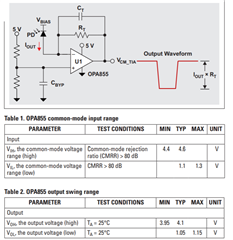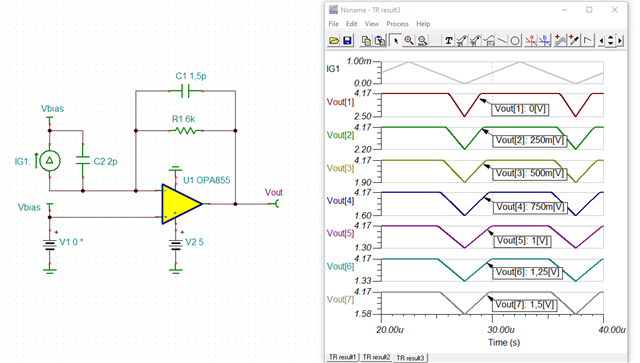Other Parts Discussed in Thread: TINA-TI
Can someone explain the below concept, I'm not able to understand it!
"TIA common-mode configurations With the PD configured as shown in Figure 3, the output of the TIA will swing in a negative direction relative to VCM_TIA. To maximize the output swing of the TIA, set VCM_TIA at the lower compliance limit of the TIA’s positive common-mode input voltage and its most positive output swing.
For example, in the case of the Texas Instruments (TI) OPA855, VCM_TIA should be set to 3.95 V when the amplifier is configured with a 5-V positive supply and a 0-V negative supply. See Tables 1 and 2. In this case, the maximum output swing is 3.95V–1.15V=2.8V.
When configuring the PD as shown in Figure 4, the output of the TIA will swing in a positive direction relative to VCM_TIA. To maximize the output swing of the TIA, set VCM_TIA at the higher compliance limit of its negative common-mode input voltage and the TIAs most negative output swing.
For example, for the OPA855 (see Tables 1 and 2), VCM_TIA should be set to 1.3 V when the amplifier’s supplies are at 5 V and ground. In this case, the maximum output swing is 4.1 V – 1.3 V = 2.8 V."

Extracted from document-Maximizing the dynamic range of analog front ends having a transimpedance amplifier




